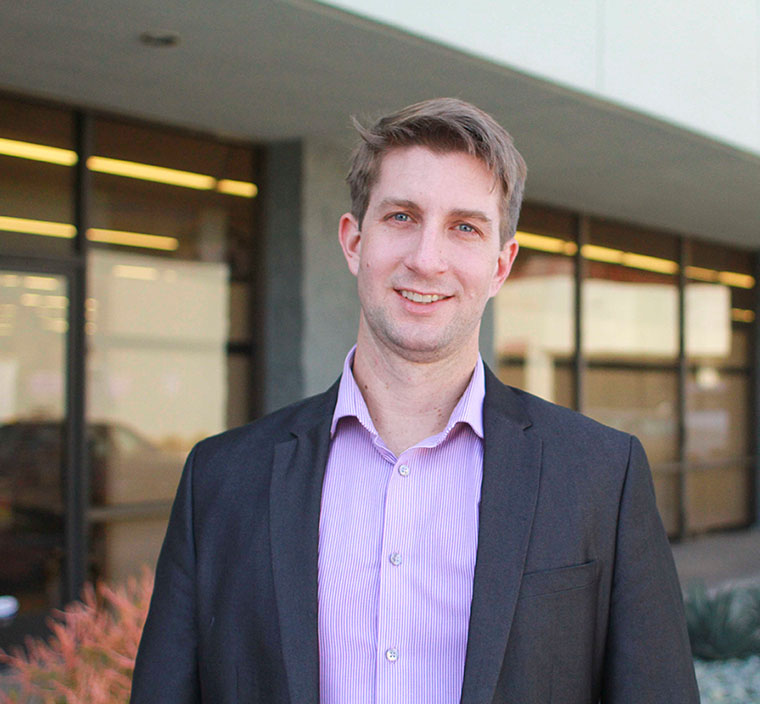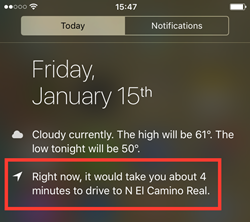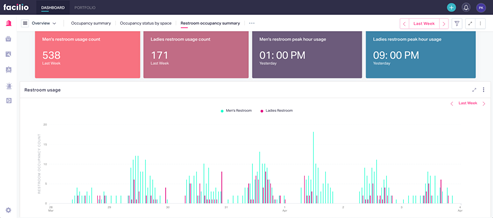|
May 2021
AutomatedBuildings.com
|
[an error occurred while processing this directive]
(Click
Message to Learn More)
|
“The Future is Now”
Change
has thrown so much at us over such a short period that everyone, literally
every single human on the planet, has had to adapt to a new reality that simply
didn’t exist a little over a year ago.
|
Phillip Kopp, CEO Conectric Networks
https://conectric.com/
|
During last month’s editorial we
considered how the building industry and the people that use buildings must
adapt to endure the constant of change. Change has thrown so much at us over
such a short period that everyone, literally every single human on the planet,
has had to adapt to a new reality that simply didn’t exist a little over a year
ago.
 In my article titled “The only constant
is change”, we explored the concepts of
structural versus behavioral adaptations. Over the last year we have mostly found
ourselves reacting quickly and behaviorally to changing conditions. And for the
most part, the structural systems needed to support the rapid environmental
changes we have endured simply did not exist. Infrastructure and resources
needed to address the global crisis was missing, supply chains were disrupted,
buildings were emptied, while others became highly demanded and under capacity.
The same for varying types of human workforce labor and skillsets. This leaves
a lot of work to be done into the future, and that most surely being a future
in which every approach to planning considers the need for flexibility and
resilience at the forefront.
In my article titled “The only constant
is change”, we explored the concepts of
structural versus behavioral adaptations. Over the last year we have mostly found
ourselves reacting quickly and behaviorally to changing conditions. And for the
most part, the structural systems needed to support the rapid environmental
changes we have endured simply did not exist. Infrastructure and resources
needed to address the global crisis was missing, supply chains were disrupted,
buildings were emptied, while others became highly demanded and under capacity.
The same for varying types of human workforce labor and skillsets. This leaves
a lot of work to be done into the future, and that most surely being a future
in which every approach to planning considers the need for flexibility and
resilience at the forefront.
While assessing our need to develop
more structural adaptations, I have suggested that our buildings may become architectural
shells, with flexible, adaptable infrastructure and software programmable
technology that can serve many uses at once, or change uses over time as needs
or the environment around the building changes over time. A demand driven
building may need to be completely repurposed from an office to a hospital in
under a week. And then into a cold storage, while finally ending its life as a
multi-family dwelling. Or perhaps, all of the above at the same time! The
adaptable building would have all the capabilities inbuilt to undertake these
requirements by plugging in new systems and modules brought in on delivery
trucks. With wireless networks bridging these systems together to eliminate the
constraints of fixed reading and control points, programmed remotely in real
time, and automated to meet the specific requirements of the current use, capacity,
and environment. It may even be customized for local energy supply and demand conditions,
as mated with other on-demand buildings and movable energy resources.
Taking this a step further, on demand
buildings would require the building industry to restructure so that the
initial construction process is really deemphasized. The owner is primarily
charging for land use, and the ongoing operation of the building and its
various uses would be provided as temporary service offerings by “building use
providers”. Making the “building use plugin” operator the real value provider,
and primary cost driver in occupying or using a building.
If you want to draw an easy parallel,
look at the evolution of the cell phone. You used to get a vertical offer
provided by a monolith like Ma Bell. She would sell you the vertical system, “communication
in a box.” You would pay an exorbitant amount for everything, hardware,
service, contracts, plans, coverage and overage. And be stuck with your
provider that only works with its proprietary sets. If the service was bad,
your call dropped. If you wanted to call out of area to into another network,
get ready to pay a huge toll. Not at all different from the state of building
systems today.
In comes a little technology, a
little anti-trust regulation and fierce competition. Now you buy your phone
hardware and can take it to whatever provider gives you the cheapest services.
The phone maker no longer provides the apps, but an ecosystem to thousands of
app providers, each whom you pay independently of the handset maker and the
carrier for the individual use function you want to get, and for the amount of
time you want to use if for (i.e. monthly). As of now, most carriers have even
removed the annual contract and there are few restrictions to switching service
providers at will. I proffer, this path will be a direct analogue of the
building industry.


The
original “bag phone” is not that much different than the operational technology
found today in buildings. In the future our buildings will be more flexible, using
modular technology and independent service vendors.
In comes this month’s automatedbuildings.com
theme, the “digital family “(twins, triplets, quadruplets, parents and great grandchildren). If
you have already managed to wrap your head around the idea of a flexible,
modular building use service let me extend us another step forward into the
realm of possibilities.
Today we are frequently having
conversations about “Digital Twins.” Although there are many better articles to
learn about digital twins, for the readers sake I can describe the cliffs notes
version. The digital twin is a representation of physical assets, their
environment and current state of use as digital parameters, recorded in near
real-time into a digital database, so that they can be visually represented in
software to the user, and recorded for future analysis.
Some would argue that there are
already millions of digital twins present in existing databases, troughs of
data points collected about everything from your building automation system, to
your personal health devices (i.e. Fitbit’s data could provide a digital twin
of “you”), and even your car. You might call this digital twin “V0.1”. This
data is usually collected for the benefit of the asset or devices [OEM]
manufacture, or a related service, and may not have been organized or designed
in such a way that it can be easily analyzed by 3rd parties or
shared with others by the user that creates it. Although the data may be
analyzed by the related parties through their own tools, it is challenging to
build additional context around the data because it cannot be seen through a
different vantage point. It cannot be combined with other data that is possibly
impacting the current state of that data, or visualized in an advanced solution
that allows multiple parties to interact with the information at the same time
from different locations. You might liken this to “Fault Detection Diagnostics”
(or FDD, another popular topic of conversation). FDD is the ability to look at
the operating characteristics of something and identify whether it is regular
or “irregular”, so that it may be serviced or improved. Although some value is
generated for the manufacturer, owner or user of the asset, a substantial
amount of “hidden value” cannot be found without being able to join that asset
or devices conditions with those of other around it or affecting it.
With this in mind, the current
conversation is around digital twins where data from all kinds of related
parties and systems is conjoined, connected and can be looked at as a much
bigger, broader and deeper data set. One in which the current state or
condition of a specific asset can be more closely linked to that of another or
any other number of related factors. Perhaps this possibility of sharing data
between data sets into a common tool, visualizing it as Augmented Reality or
global dashboards or even in Virtual Reality is what we commonly think of today
as the digital twin and should be called “V1.0”. This kind of digital twin will
help make it very fast and easy for different teams, with different skillsets,
and different perspectives to look at data sets and quickly identify where
problems and opportunities might be found, or where resources need to be
immediately dispatched or controlled to enhance safety, optimization,
performance, etc…

A digital twin of Tampa Florida built by Imerza using the Unreal
Engine (source: architosh.com)
In comes the master of future systems
and a close and trusted colleague, Nicholas Waern,
“the building whisperer” in his recent interview with Ken Sinclair on “Digital
Triplets”, and their various family extensions. Could
we already be leapfrogging V1.0 into V2, V3, V4 and beyond? What exactly does
this mean in the context of “flexible buildings” in an ever-changing
environment? In my humble opinion, almost everything actually!
Although the first two steps by
themselves are already quite a lot to grasp, what Nicolas is really talking
about is more than just an extension of a software solution. It is one part
science, and one part magic. In essence, the digital triplet is our coming
ability to predict the future.


“Prediction
then” “Prediction now”
Predicting
the future is no longer just in the domain of the gypsy fortune teller, it is
built into the software we use every day and soon to be much more powerful with
the Digital Triplet
While this feature exists to some
extent in our V0.1 as “predictive analytics”, the potential scope and accuracy
is quite limited by the amount of data that can be analyzed and projected. That
is because the “context” is missing as to why the source data underpinning the
prediction is what it is. It is impossible or difficult to tell what the “root
cause” is. That means that even if an imminent failure is predicted based on
the current state of a machine, because say a vibration sensor, or a power
quality reading has deviated from the norm, we still don’t really know the
underlying cause. Is it because of an operator error? An environmental
condition that device was subjected to? The failure of an individual component
because of a bad production batch? While we can replace the device and solve
the problem before it becomes catastrophic, we do not really learn how to
prevent it from ever happening again in the future.
With the digital triplet all
information, from all sources are taken into context. It becomes possible for
advanced software to look at the surrounding conditions, the operator behavior,
the systems linked to that system and even the individual components and their
life cycle history. Did the motor fail because the brushes for that motor were
produced on an incredibly hot day and encountered a small, but undetectable
stress defect? Which became apparent only under the very specific conditions
that the failed motor just underwent. Can we then apply that to all similar
motors, produced with the same component, and being used in other sites to
identify potential failures? Then predict those failures based on the projected
operating conditions in those installations, which may line up with the
specificities found in the failed example? With a digital triplet this vast
amount of corollary data will lead to incredibly accurate and detailed
predictions about the future of everything!
I started my company Conectric Networks over 5
years ago with the specific concept in mind to enable a “data utility” to be
able collect and sell information to “AI” consumers (or as we are now calling
them, digital triplets), everywhere. We collect large amounts of human, environmental,
machine state and energy data in near real-time using wireless sensors from
applications where it otherwise might not be available or extractable. This
data then gets forward into databases and analytics, or “digital twin”
platforms exactly as described above. Specifically, I believe that the energy
grid of the future must be able to meet a very complex requirement to
match supply and demand in a highly dynamic world where even cars are mobile
“power plants”, able to both consume and produce energy that will be used to
provide building related and lifestyle services. I believe that we must have a
massive network of granular data feeding into the global digital triplet to
effectively predict future energy needs, and therefore match supply and demand
based on past, current and future resources.
This data cannot be limited to just
the feeder system, or even the individual low voltage transformer as it is in
today’s grid, but literally every single potential energy consumer, asset,
device, machine, etc… connected to the system. In the end, the future of
civilization and our ability to grow and prosper will depend on having high
quality, reliable and abundant energy. And more so than ever, this energy
source must be renewable and non-harmful, distributed, and resilient. It must
be able to meet the dynamic requirements of the “on-demand” building structure,
the “on-demand” transportation, the “on-demand” end use needed, just at the
right place, at the right time.
And this current reality is how I see
the immense power and value of the digital triplet emerging. These things
together are the enablers to our future growth and advancement as a resilient,
adaptable civilization. Where we can not only manage risks as they emerge, but
we can predict them before they happen and harden ourselves structurally so
that even the very worst scenario just isn’t that bad after all.
And although we are not quite yet
able to impact the regulated energy grid system in the way I would like to, we
have developed an amazing solution to be able to deliver digital triplet use
cases in commercial office buildings, by helping building owners and tenants
provide on-demand, flexible office environments. We can connect buildings with
their occupants on an as needed basis, and ensure that the services such as
Facilities Maintenance (FM) and janitorial services needed to support a highly
dynamic office occupancy are equipped with the future prediction abilities to
support a seamless, interactive and transparent hybrid office experience. And
in my attempt to step towards that interactive grid, we are even tying together
those hybrid work experience environments with building management systems to
automate the heating, lighting and access control to optimize equipment
efficiency, reducing the energy and carbon consumption, based on real-time and
predicted future demands (that subject could encompass a whole different
article on its own!).

Male and female office restroom usage is analyzed and predicted
based on low cost, non-invasive Conectric wireless sensors and the AI enabled
Facilio.com analytics platform that records and reports usage in near real-time
Magic is no longer just for fairy
tales, but humans and our machines have literally attained the capability to
see into the future. And as more digital triplets and their families emerge,
this capability will become more and more powerful. As I like to envision it,
for the greater good of humanity. Or as I often say, for a safer, healthier,
more productive, and environmentally sustainable world!
Please do not hesitate to reach out
to me to learn more about how you can realize these benefits in your own
scenarios and see why the Future is Now.
footer
[an error occurred while processing this directive]
[Click Banner To Learn More]
[Home Page] [The
Automator] [About] [Subscribe
] [Contact
Us]
 In my article titled “The only constant
is change”, we explored the concepts of
structural versus behavioral adaptations. Over the last year we have mostly found
ourselves reacting quickly and behaviorally to changing conditions. And for the
most part, the structural systems needed to support the rapid environmental
changes we have endured simply did not exist. Infrastructure and resources
needed to address the global crisis was missing, supply chains were disrupted,
buildings were emptied, while others became highly demanded and under capacity.
The same for varying types of human workforce labor and skillsets. This leaves
a lot of work to be done into the future, and that most surely being a future
in which every approach to planning considers the need for flexibility and
resilience at the forefront.
In my article titled “The only constant
is change”, we explored the concepts of
structural versus behavioral adaptations. Over the last year we have mostly found
ourselves reacting quickly and behaviorally to changing conditions. And for the
most part, the structural systems needed to support the rapid environmental
changes we have endured simply did not exist. Infrastructure and resources
needed to address the global crisis was missing, supply chains were disrupted,
buildings were emptied, while others became highly demanded and under capacity.
The same for varying types of human workforce labor and skillsets. This leaves
a lot of work to be done into the future, and that most surely being a future
in which every approach to planning considers the need for flexibility and
resilience at the forefront. 




